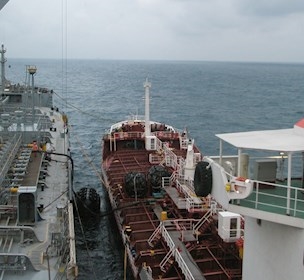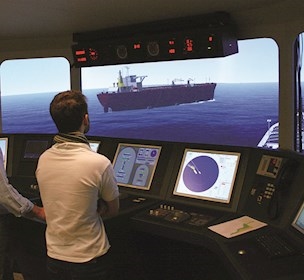Ship to Ship Training
Ship to Ship operations for Captains and Officers as well as Pilots and Mooring Masters. Advanced ship manoeuvring techniques during STS operations.
Goals and objectives
The purpose of the Ship to Ship (STS) training is to train pilots or mooring masters as well as captains and officers in advanced ship manoeuvring techniques during STS operations by improving communication and mutual understanding between the captain of the mother vessel and the pilot or mooring master on the daughter vessel during manoeuvring. This is ensured through theory and simulator exercises, and in that way a high level of skills in relation to close quarter STS operations is ensured.
Course description
Ship to Ship training is a three-day course focusing on the general principles of STS operations, including ship handling and manoeuvring, emergency aborting, and safe watch keeping. Moreover, the participants will be trained in pre-planning including contingency planning, communication strategies during approach, mooring, and unmooring. During the exercises, the participants will gain skills within ship handling theory and ship-ship interaction and become familiar with the use of operational and safety checklists.
The course consists of theoretical lectures, simulator exercises, and debriefings using sophisticated replay tools.
The simulator exercises will give an in-depth understanding of environmental factors, such as wind and current, which will be changed and slowly increased until the operational limits for the STS operation are met. This kind of training ensures that a high and uniform level of competence is achieved in which the trainees have all been through the same pre-defined curriculum. The simulations will be set up using two simulators; one simulator for each vessel involved in the STS operation.
Gains
After completing the course, the participants will have a thorough knowledge of:
- Manoeuvring a vessel when carrying out an STS operation
- Forces in connection with the use of rudder and propeller.
- Use of bow thruster and different types of tugs
- STS operation without tugs underway including ship/ship interaction
- Manoeuvring in shallow water and under different environmental conditions
- Shallow water and banking effect
- Anchoring procedure
- Emergency response
- How to secure fenders in a safe way and shifting/sailing with fenders alongside
- Selecting fender size, amount of fenders and assessing their strengths and limitations.
- Mooring arrangement, contact and agreement with the other vessel and different types of moorings and procedures for mooring during STS, including mooring operations under different environmental conditions
- Use of checklist as required and exchange of experience between masters, pilots and mooring masters. Briefing and debriefing as applicable
- Tanker-specific layouts
References: STCW including 2010 Manila amendments, 2017 edition. Table A-II/1 and A-II/2.



